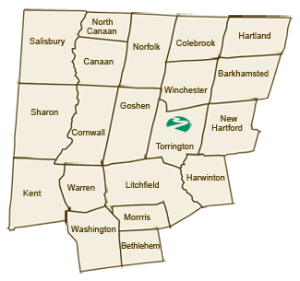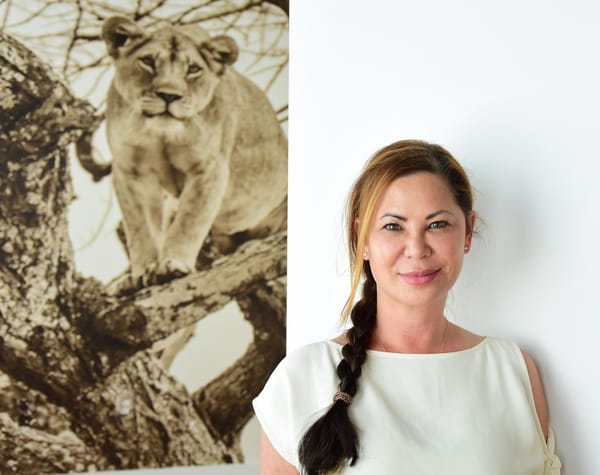The mailbox is full not only with greeting cards but solicitation letters from worthy charities of every imaginable sort. Giving to the local volunteer fire department and library is a no-brainer, but how do you effectively make donations that are meaningful to you and your neighbors as well as helping people close to home whose needs are not necessarily visible? Community foundations are an effective way to help others, and we have two exemplary ones in our region: the Berkshire Taconic Communty Foundation and the Community Foundation of Northwest Connecticut . Rural Intelligence asked Guy Rovezzi, the president of the Community Foundation of Northwest Connecticut, to help us think about how to give. (In coming weeks, we'll talk to Berkshire Taconic's Jennifer Dowley about the same subject.) Rural Intelligence: What kind of questions should one ask oneself about making charitable donations? Guy Rovezzi: There are many reasons why people feel inclined to be charitable, and all are very personal. By reflecting on one’s charitable priorities, financial goals and personal interests, an individual can better determine what type of donations provide the most personal gratification. Things to consider include: causes you are passionate about, which nonprofit organizations have a proven track record of effectively addressing those causes, and what kind of impact you hope to make through your donation. Rural Intelligence: How should one think about local vs national vs global concerns? Guy Rovezzi: There are approximately 1,010,400 charitable organizations in the United States. Each brings with it limitations and advantages, geographic restrictions and operational nuances that affect its ability to deliver the promise it holds for its constituency. It is important to do your homework to determine a nonprofit’s legitimacy. Learn as much about the nonprofit as possible, and determine if its mission aligns with your sense of place and sense of purpose. There are websites like Guidestar.org, Networkforgood.org and Charitynavigator.org that can help, as well as your local community foundation. And know that there are sometimes government-imposed expenditure responsibilities that come with certain forms of international support.

The Community Foundation of Northwest Connecticut Founded: 1969 Mission: To serve as a leader, catalyst and resource for philanthropy with the goal of enriching the lives of present and future members of our communities. Assets: $16.5 million Geographic area: 20 towns in northwest Connecticut Funds under Foundation management: nearly 200 Total 2007 scholarships awarded: $90,975 Total 2007 grants: $801,451.81 Total 2007 grants and scholarships: $892,426.81 Number of 2007 grants: 130 Number of 2007 scholarship recipients: 139 Number of 2007 contributors: 1,350 Number of volunteers: more than 150 Gifts received in 2007: $2.6 million Rural Intelligence: How can one get the most bang for the buck?Guy Rovezzi: In the midst of infrequent but highly publicized nonprofit scandals, there is now greater emphasis on transparency and accountability for all nonprofits, large and small. People tend to focus on what percentages of their nonprofit donations go to direct services as opposed to management and administrative expenses. This can be misleading, though, and not necessarily a true indicator of how effective an organization is in delivering quality, results-oriented services with the greatest impact. Consider what part of your donation is deployed locally, if that is important to you, and to what extent an organization can define, measure and communicate the impact and outcomes of its work. Rural Intelligence: Does the Community Foundation make sure that the groups it helps do not have high overhead costs?Guy Rovezzi: This question might be better phrased as: Does Community Foundation analyze a nonprofit’s operational overhead relative to its staffing levels and the services it provides? Yes, CFNC utilizes a responsible grant application protocol, which requires that all nonprofit requests are accompanied by current financial information, tax documents, and other verifiable financial and non-financial data, designed to create an overview of the fiscal responsibility, efficiency and economies of scale that are employed in the nonprofit’s discharge of its duties. Rural Intelligence: I want to help my neighbors who are struggling because of this difficult economy? Guy Rovezzi: Whom do you consider your neighbors to be and how do you define struggle? … people from your town, your region… the Wall Street weekender that just got laid off … the178 homeless people in Litchfield County? I don’t mean to sound flippant but there are different possible solutions depending on your answer. Rural Intelligence: Where should I turn and what should I do?Guy Rovezzi: The most obvious symptom of this economic crisis is the dramatic rise in basic LOCAL needs: food, clothing, and shelter as well as rent and utility assistance. There are approximately twenty-five nonprofits dedicated to supplying this kind of emergency support in northwest Connecticut. They cannot keep up with the demand. The Community Foundation of Northwest Connecticut has set aside $50,000 in grant funds for emergency service support to many of these nonprofits during this winter season, and donations can be made to the Community Foundation to supplement this effort, or directly to those organizations. Rural Intelligence: Is it better to give less (say 25% less) to all my favorite charities or should I cut some donations entirely to make sure I give what I gave last year to my favorites?Guy Rovezzi:We see ourselves, in some respects, as neutral facilitators of private philanthropy. We try not to pass judgment on how an individual decides to effectuate his or her philanthropy, but to act as a resource to help make the most of a person’s generosity, no matter what form it takes. Aristotle once said, “To give away money is an easy matter and in any man’s power. But to whom to give it, and how large and when, and for what purpose and how, is neither in every man’s power nor an easy matter.” Rural Intelligence: Is local giving (like local shopping) the way to go?Guy Rovezzi: Local giving is, to some small degree, selfish. What I mean is that we are indirectly helping ourselves when we support our own communities. We all stand to benefit when we contribute to the welfare of our region. Our local benevolence and volunteerism collectively improve the quality of life for all of us, our parents, our children, and future generations of Northwest Corner citizens. And from my point of view, this is no less honorable than maintaining a global perspective on giving. Rural Intelligence: What are the limitations of local giving?Guy Rovezzi: Really there are none. Perhaps the only potential downside to local giving is that, unless you do it anonymously ( as in, for instance, through a community foundation), you may find that your name is included on locally distributed nonprofit acknowledgment material, thereby leaving yourself open to an increase in the number of local nonprofit solicitations you receive.








